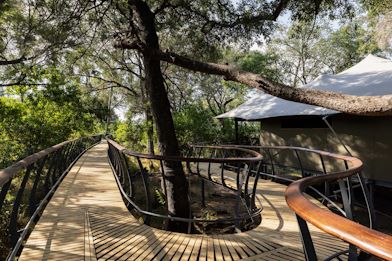Waterlilies open by night and by day, and their startlingly white flowers are hard to miss – especially when seen against Delta waters that are so clear they appear black. On a mokoro excursion from Vumbura Plains or Little Vumbura, you’ll be able to see these iconic plants up close – and you may just be lucky enough to capture that classic photograph image: a painted reed frog perched motionless on a white petal.
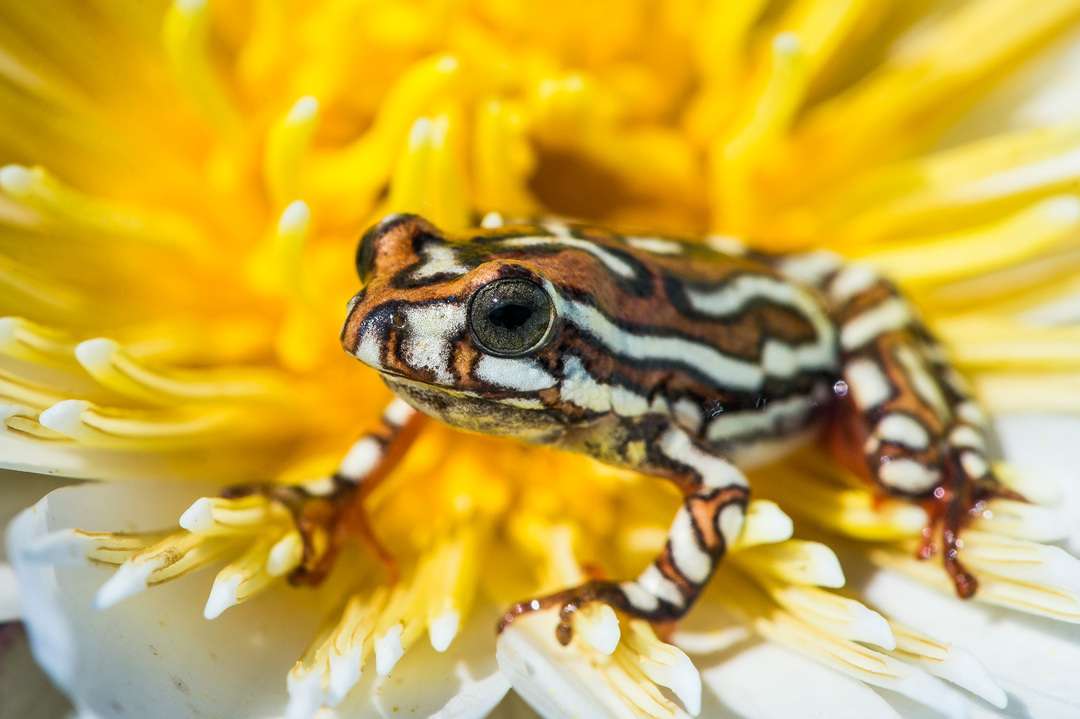
The abundance of water lilies in the Vumbura area takes nothing away from their beauty, but you may not have known that they are much more than a mere bauble.
Ecologically fascinating, waterlilies also play an important part in the traditional lifestyles of the people of the Delta region.
Waterlily Ecology and Pollination
The life history of the waterlily is a story in itself – look across a lagoon, and you’ll notice that while some of the blooms are white, others are a delicate shade of purple. Those are the ones that have been pollinated, by insects ‘tricked’ into carrying pollen from plant to plant.
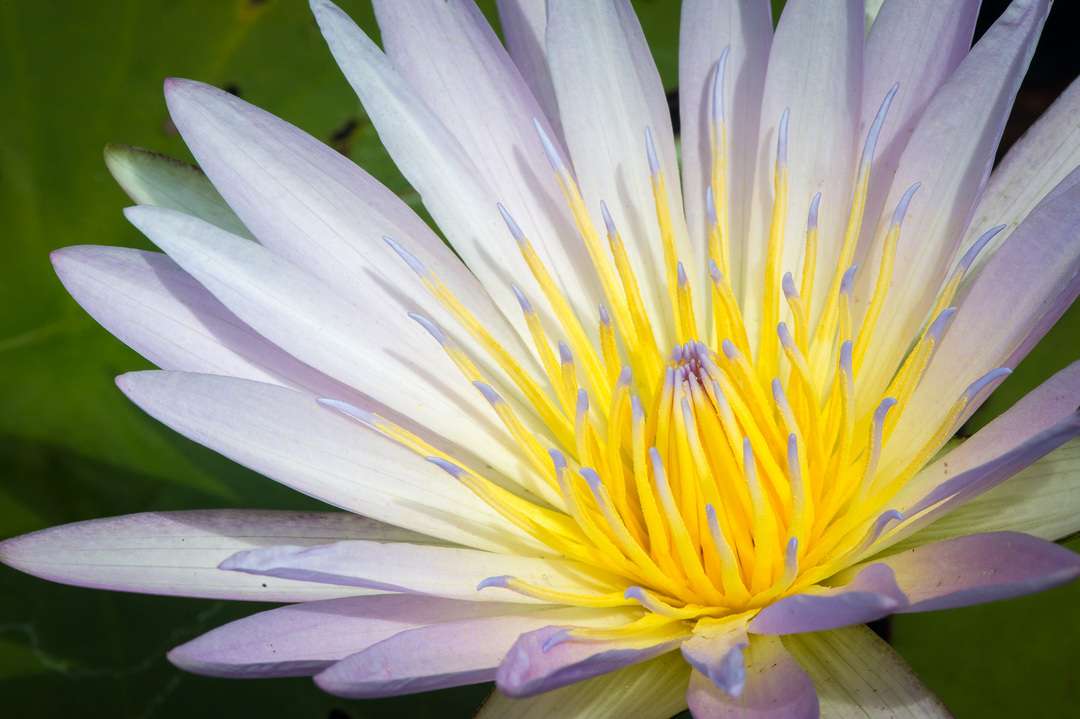
With different lily species opening at different times of day, they reduce the competition for the attention of insects. Usually, you’ll see fewer purple flowers than white ones. That’s because once the lily has been pollinated, the bloom’s work is done, and it is slowly withdrawn below the surface to develop into a floating seedpod which is then released to drift with the current until they sink, or perhaps get eaten by a pygmy goose (which, along with the African jacana, is just one of the species that rely on lilies for living space).
Either way, once the seeds are deposited, they germinate and begin to grow a new rhizome – which itself can branch off into new plants. Although water lilies appear fragile and ephemeral, the rhizome anchors them fast and gives them a surprising permanence.
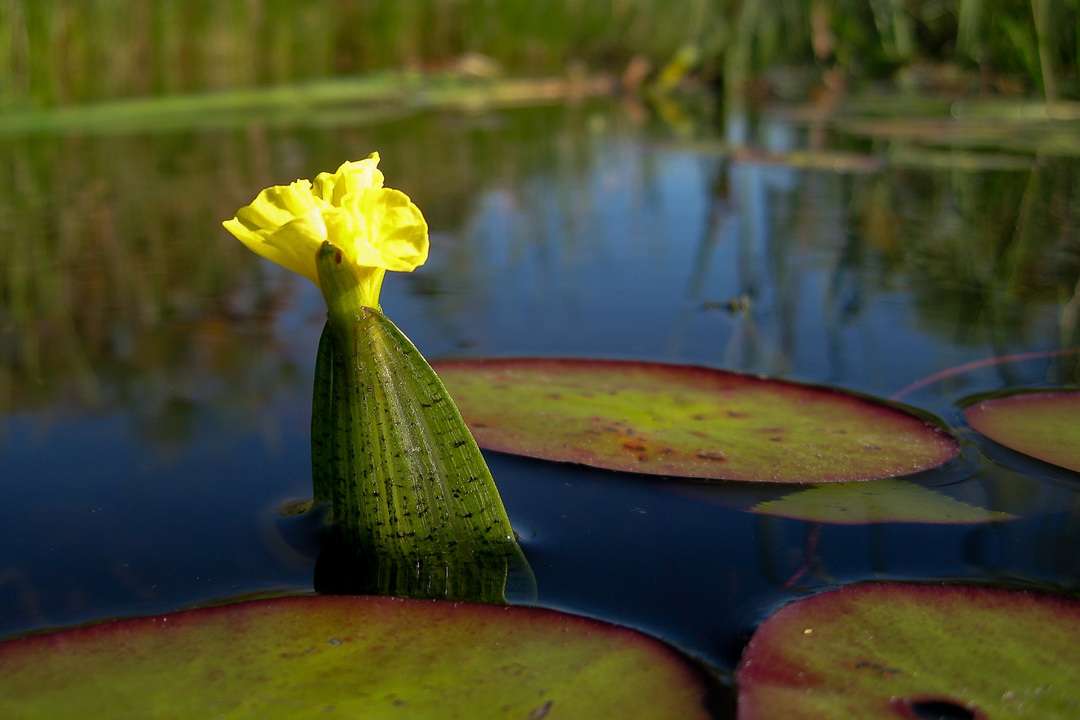
The shade cast by their distinctive leaves (either saw-toothed or smooth, depending on the species), creates a cool sanctuary for smaller creatures hiding from predators, while the rhizomes help to bind mudbanks into habitats in which other plants can flourish.
Cultural Uses of Waterlilies
To the people of the Okavango, the waterlily is a source of food, health and comfort. The larger leaves can be fashioned into hats to ward off the sun, while the stems can be improvised into jewellery. Although the waters of the Delta are naturally filtered as they flow through papyrus beds and sand bars, sipping through a straw made from a waterlily stem is a great way to be absolutely certain of the purity of the water you’re drinking.
Perhaps the most satisfying use of the waterlily is to dry the rhizome and pound it into a flour-like powder. It can then be used to make pancakes, or a very special stew known as ‘Mma Glo’s Tswii’ (tswii being the Setswana name for waterlilies of all kinds), named after the Head Chef at Vumbura Plains South.
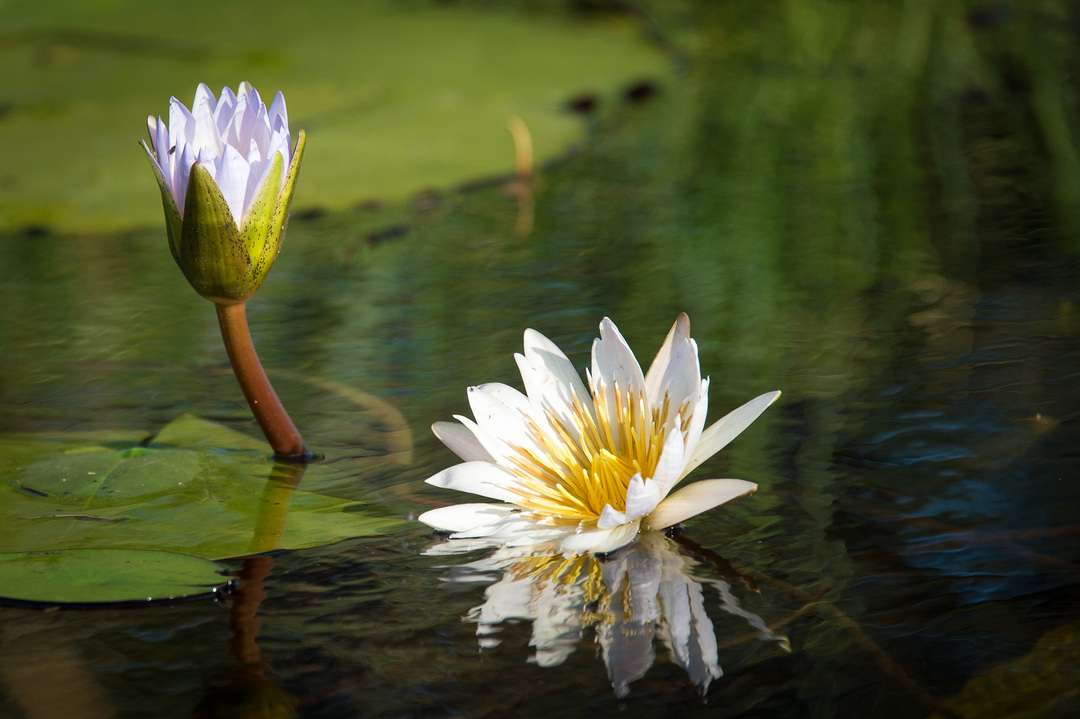
Decorative, delicious and perfectly designed to make the most of – and add to – their watery habitat, the day and night lilies of the Okavango are a vital part of the Delta ecosystem, and the inspiration for much of the design work you see at Vumbura Plains.




